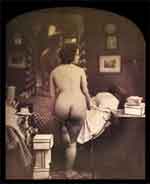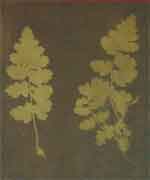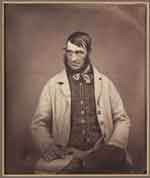1840 - 1860
Photography has been utterly transformed since its analogue origins in the early 19th century. From long-exposure, monochrome beginnings through ‘instantaneous’ exposure and colour images, it has evolved to digital processes that allow us to record events light years distant.
Before the advent of photography, many individuals searched for ways permanently to capture the fleeting images projected within the camera obscura, which had been an artist’s aid for some two hundred years. Pierre Harmant1 lists twenty-four people who claimed to have invented photography after its public announcement and there are many published histories of its emergence.
In particular, in the early 19th century, the prolific French inventors Joseph Nicéphore Niépce and his brother, Claude, conceived the idea of trying to fix images seen in the camera obscura. Joseph actively pursued this end and, in 1827, succeeded in making, and fixing, what we now call a photographic image in a thin light-sensitive solution of bitumen. He called this image a heliograph but its insensitivity was such as to make it impractical. Louis Daguerre, a theatrical scene painter who also invented the diorama, formed a partnership with Joseph their efforts finally resulted in a practical process of making ‘fixed’ images.
In January 1839, two announcements were made of what we now call photographic processes, each very different from the other. Progress continued with further advances in the 1850s. click below for full details.
 In January 1839, an announcements, made in France on behalf of Louis Daguerre and Isadore Niépce, revealing the ‘Daguerreotype’.
In January 1839, an announcements, made in France on behalf of Louis Daguerre and Isadore Niépce, revealing the ‘Daguerreotype’. Full description
 A second announcement in 1839 was made on behalf of an Englishman, Henry Talbot who discovered a process that he called ‘Photogenic Drawing’
A second announcement in 1839 was made on behalf of an Englishman, Henry Talbot who discovered a process that he called ‘Photogenic Drawing’Full description
 In 1850 the Frenchman Louis-Désiré Blanquart-Evrard invented a positive image known as an albumen print
In 1850 the Frenchman Louis-Désiré Blanquart-Evrard invented a positive image known as an albumen printFull description